What do Ivanka Trump, Michael Moore, a convicted child murderer on death row called Richard Allen Davis and John Ramsey’s son from his first marriage – John Andrew – have in common?
Not much, obviously, but if each of the first three individuals provides us with any insight into John Andrew, then perhaps we have a formula for gaining a little additional insight into John Ramsey via his eldest son. And if we have more insight into one son of John Ramsey, perhaps we’ll come away with more insight into the other. Worth playing for?
Let’s start by looking at Ivanka Trump.
- Ivanka – like father like daughter?
How much is Ivanka like her father, and what do we learn about her father through Ivanka? Further, what can be applied, and how much, to the psychology surrounding the Ramsey case?
From theaustralian.com.au:
Now 35, married and a mother of three, Ivanka was but 27 when she wrote The Trump Card: Playing to Win in Work and Life. I can’t remember the book making much of a splash when it landed but now that Ivanka’s dad has been elected president, it has been taken apart and mocked.
As memoirs go, you’d have to agree that it has something of a fatal flaw, in that it lacks a certain self-awareness. Take the opening line which, I kid you not, reads: “In business, as in life, nothing is ever handed to you.”
She goes on: “Yes, I’ve had the great good fortune to be born into a life of wealth and privilege, with a name to match … Yes, I’ve chosen to build my career on a foundation built by my father and grandfather …”
But that doesn’t mean it has been easy. The first time Ivanka had to walk into a board meeting, at the age of 25, she felt sure that all the middle-aged men sitting around the table thought she was there only because of her dad.
In prior narratives, I highlighted the diminishing returns of excess. As wealth increases self-awareness decreases – is one of the more obvious. When we see this “excess” and “excessive self-inflatedness” manifest in children we call them “spoiled”. Spoiled children grow up to be spoiled adults.
The word spoiled suggests a bungled, slipshod or low-grade attitude to one’s fellow man and the world one lives in, but of course what it really is, is superiority. It’s superiority based on money. Well, isn’t that the way of the world and if it is, does it really do any harm?
Very wealthy people are a law unto themselves. They don’t cook, or clean. They don’t have to apologize when they make mistakes. They sue or fire those who stand up to them. If they break something they buy something to replace it. In this sense, when people take on money’s transactional nature, they develop a disposable personality. In many cities around the world we see this disposable personality writ large as throwaway culture. Surrounding cities are mountains of garbage. You don’t want it or like it? Pretend it’s not a problem or throw it away.
Again, we may shrug and say, “What’s the harm in that?” Well, this incessant keeping up with the Kardashians and comparing oneself to the Jones’ is in my opinion why the Ramseys felt compelled to cover up the murder of their daughter. They were so caught up in a world of appearances that they simply could not be seen in the impossible light the crime placed them in. They couldn’t bear to be seen as what they were: inadequate.
Money of course is a sort of cultural weapon used to immunize ourselves against inadequacy and insecurity. Does it work? Does Donald Trump strike you as a man secure within himself? Besides the bluster, how about that hairstyle? And how about his daughter?
From theaustralian.com.au:
In fact, she says, “we didn’t rise to our positions in the Trump company by any kind of birthright. We had to earn our place. And we’ve all had some kind of advantage somewhere along the way … People think Donald Trump’s daughter could not possibly have ascended to the role of vice-president of his real estate company for any reason other than the fact that I’m my father’s daughter … In fact, despite my title, my pedigree, I’m just like any other young woman in the workplace.”
This is complete nonsense, but also not what I’m looking for.
An interest in the material benefits of money by its very nature makes the interests of human beings secondary. An obsession with money leads to seeing the world and people as a transactional demesne, with money as the ultimate barometer of a person’s ultimate worth. Soon everything is seen in terms of monetary worth, including one’s spouse, one’s friends, one’s children.
As grand of course as the sequin stars are of the rich and famous, it’s not enough to save them from death. The rich, like the poor, come into the world naked and no matter how much money they’ve made, the richest of the rich leave the world just as naked, and just as dead as the poorest of the poor.
If money is pageantry it is also death and shit. This is the strange side-effect of buying into transactionality. In the case of Donald Trump, we clearly see a tussle between “reality” and “Trump’s reality.” Facts that do not agree or “sit well” with Trump are dismissed as “alternate facts”. It’s not necessary to stress how dangerous such a narcissistic attachment to one’s own reality can become, especially when a narcissist has massive resources [like the White House] at his disposal to defend his delusions.
But isn’t a narcissistic attachment to one’s own reality in defiance of reality one description of the Ramsey case?
If a transactional approach to the world makes us uncomfortable, it should. Many of us participate in this transactional world up to a point. Men buy beautiful women, and women make themselves beautiful, high-priced commodities. But there’s always a fatter cat out there, always a bigger, more beautiful fish swimming in the sea. If money maketh you then similarly someone with more money or more beauty invalidates you. Also, if your money isn’t good enough to warp the world to your will, as occurred recently with Trump’s attempt to install a “Muslim ban”, then what is it good enough for?
From theaustralian.com.au:
“When I was a child my home was the top three floors of Trump Towers on Fifth Avenue,” she writes, “and it had my father’s name on it, up there in big, bold letters. In fact, when I went to boarding school, they were the first buildings I’d lived in that didn’t say TRUMP.”
Ivanka’s bedroom was on the 68th floor, and “in many ways it was a lot like the bedrooms of other little girls my age”. Except, of course, that “during this time, Michael Jackson was living one floor below us …” The book is filled with lines like that, including this one: “After my father bought the Plaza …” And: “I went to dad and said, why don’t you surprise Tiffany with a credit card for Christmas?”
Lest you think she was spoiled, Ivanka insists she was not. Her friends from boarding school would talk about “my jet, my villa, my yacht, my stuff” but “there was no room for that type of thinking” at Trump Towers.
- Michael Moore on TrumpLand
Michael Moore was exceptional in his prediction that, despite what the polls were showing, Trump would win the election.
MOORE: Trump’s election is going to be the bigger ‘fuck you’ [holds up the finger], ever recorded in human history. And it will feel…good! [Long pause]. For a day. Ahh, maybe a week. Possibly a month. And then like the Brits who wanted to send a message, so they voted to leave Europe, only to find out that if you vote to leave Europe you actually have to leave Europe! And now they regret it!
Referring to the US election in 2016, Moore says:
You used the ballot as an anger management tool.
What the US election shows is that the same obsession with money [Trump’s money in this case], the same hypnosis affects those with it affects those who without. Half of America using the ballot as an anger management tool [just as Britain had] shows to what extent this transactional psychology has addled entire nations. In South Africa, black South Africans have voted on entirely racial lines to score some sort of racial payback after years of Apartheid racism. One racism has been exchanged for another.
Moore goes on to show how slipshod truth is hijacked by those participating in populism:
MOORE: Those of us who are upset about the things in this country that we’re upset about, the way to fix it, you know, isn’t to put Trump in there to blow it up. But…a couple of rightwing websites doctored that piece, right after where “If you vote for Trump and it’ll feel good…”
This is transactionality’s deceptive power. Take what you want, take what people want to hear, and throw away the rest.
It’s not a very scientific approach to reality is it? Any long term disconnection with reality creates psychological schisms which manifest in very unhealthy ways. How can one otherwise explain the cover up of JonBenét’s murder as just as psychologically slipshod? And wasn’t that low-grade attitude to their circumstances borne out of the same shit – the Ramseys being spoilt and superior?
From Ivanka we see a flawed way of thinking that may seem perfectly normal to her. From Michael Moore we see how a narrative can be controlled and also perverted towards a particular end.
- Richard Allen Davis and Crime as a form of Emergency Venting
Davis is the man who kidnapped and murdered 12 year old Polly Klaas,
From Wikipedia:
[Richard Allen Davis] Davis was born the third of five children in San Francisco. Both of his parents, Bob and Evelyn Davis, were alcoholics. His defense attorneys during his trial said that his mother was a strict disciplinarian and punished Davis for smoking by burning his hand.
The couple divorced when Davis was 11. After the divorce the children lived with their father, Bob, a longshoreman. Davis’ father was sometimes unable or unwilling to care for his children, so they shuttled among family members and babysitters. Davis’ father would remarry two times. Davis resented both of his stepmothers.
Bob Davis was mentally unstable and sometimes suffered from hallucinations. He is reported to have taken a gun outside the home and shot at mirages.
Mental instability can be brought on by something as simple as a parent who neglects his own children.
From Wikipedia:
At an early age, Davis tortured and killed animals. According to Ruth Baron, the mother of one of Davis’s childhood friends, “He would douse cats with gasoline and set them on fire. He made a point of letting people know he carried a knife, and he used to find stray dogs and cut them.”
What do Ivanka Trump, Michael Moore’s TrumpLand and Davis have in common? Have you figured it out yet?
From Wikipedia:
By the time he entered his teens, Davis was deeply involved in a life of crime. He told a psychiatrist that stealing relieved whatever “tensions” were building up inside him. He dropped out of high school in his sophomore year.
At 17, Davis found himself in front of a judge, who told him that he could either go to the California Youth Authority or join the United States Army. He chose the latter. He received a discharge after 13 months’ service.
On October 12, 1973, Davis went to a party at the home of 18-year-old Marlene Voris. That night, Voris was found dead of a gunshot wound. There were seven suicide notes at the scene, and the police concluded that she committed suicide. Friends of Voris believe Davis murdered her. In 1977 he told a psychiatrist that her death had deeply affected him and he had been hearing her voice in his head and also “At times another voice would appear, telling him that she wanted to be assaulted or robbed or raped.”
A crime of course is the ultimate transaction. One person takes another’s life or innocence in exchange for some sort of psychological “reset”. Perhaps the criminal has had a bad childhood or is not being treated well. By committing a crime, some sort of psychic “equilibrium” is regained. Of course, it would only need to regained in a world operating along the lines of transactionality.
The prosecutor in the Jodi Arias trial once remarked that crimes are either motivated by money or sex. Joe Kenda adds a third dimension – revenge. The revenge often has to do with money or sex or a perceived loss of social status [which has an impact on money or sex].
From Wikipedia:
A few weeks after Voris’ death, Davis was arrested for attempting to pawn property he had stolen. He confessed to a string of burglaries in La Honda and served six months in the county jail. Five weeks after his release, on May 13, 1974, he was arrested for another burglary. He was sentenced to 6 months to 15 years in prison; however, he was released on parole after serving a year of his sentence.
When a criminal commits a crime and is convicted, transactions abound. The criminal gives up his life behind bars to “pay” for the crime. The various lawyers, judge and jury get “paid” for their involvement in this transaction. Justice is expressed in transactional terms too – as a rebalancing of the scales.
When a crime is committed but the body and evidence covered up, what is actually going on? Well, a cover up and staging is an attempt to interfere with or disrupt this transactionality. The criminal wishes not to “pay” for the crime he’s committed. If he can muddy the signals that link him to crime, he doesn’t have to. And he does that by scattering fake signals – hundreds of sequin stars – to throw investigators off track.
An inadequate person, incidentally, does precisely the same. Instead of admitting they’re not up to scratch, they find ways to bullshit that they are. In the Polly Klaas kidnapping and murder, what’s likely is that Klaas was alive when the police first found Richard Davis stuck by the side of the road, just as happened to Danielle van Dams kidnapper and murderer, David Alan Westerfield.
From Wikipedia:
[On October 1st, 1993] in a rural area of Santa Rosa…a babysitter returning home noted a suspicious vehicle stuck in a ditch on her employer’s private driveway. She phoned the property owner, who decided to leave with her daughter. As she drove down the long driveway to Pythian Road, the owner passed the suspect. She called 911 when she got to a service station and two deputies were dispatched on the call.
The deputies did not know of the kidnapping [of Polly Klaas] or the suspect’s description…The deputies ran the suspect’s driver’s license number and car plate number, but they came back with no wants or warrants. The deputies tried to convince the property owner to perform a citizen’s arrest for trespassing. Under California law, a citizen must make an arrest for this type of misdemeanor. The property owner would have had to go to the car with the deputies and say “I arrest you.” The deputies then would have taken him into custody. The property owner refused.
This refusal to directly intervene possibly cost the twelve-year-old Polly her life.
From Wikipedia:
The deputies called for a tow truck to get the suspect’s car out of the ditch. They searched it thoroughly before the arrival of the tow truck and did not find evidence of anyone else in the car….
Two months passed.
From Wikipedia:
On November 28, 1993, the property owner was inspecting her property after loggers had partially cleared the property of trees. She discovered items that made her think they might have matched those used in the kidnapping. She called the Sheriff’s Department to report her discovery and deputies and crime scene investigators were dispatched. One of the items found, a torn pair of ballet leggings, was matched by the FBI Crime Laboratory to the other part of the leggings that were taken as evidence on the night of the kidnapping…
In lieu of Davis’ silence, a total of about 4000 people searched for her.
From Wikipedia:
While Davis was being interrogated by Petaluma PD and the FBI, a massive search was launched on Friday, December 3…The search remains today as one of the largest ever conducted in California. The search continued through Saturday, December 4. The search effort produced other items of evidence, but did not produce any evidence of human remains. The search was planned to continue on Sunday, December 5, but on the evening of December 4, Davis confessed to kidnapping and murdering Klaas and led investigators to her body. He had buried her in a shallow grave just off Highway 101, about a mile south of the city limits of Cloverdale, California.
When Davis broke in and kidnapped Klaas, he intended to spend private time with Klaas. The disposal of the body was done in a way to hide it, not merely to hide the body from view but because Davis didn’t want who he really was to be revealed. This is the aspect we often miss – the efforts to hide are not simply to hide the victim, but also to hide the identity and the type of person who would do such a thing.
From Wikipedia:
It is debated that [Davis] killed [Polly Klaas] before the arrival of deputies and hid her body in the thick brush on the hillside above where his car was stuck. He then waited for an undetermined period of time after being escorted back to Highway 12, about 1.5 miles from where his car was stuck and drove back up to retrieve her body. He was reportedly out of breath, sweating profusely (despite being a cool night) and had twigs and leaves in his hair when contacted by deputies. It is also debated that he had chosen the grave site in advance, since it would not have been discovered by a casual observer. The grave site area would be directly visible from Highway 101, but not the grave itself. [Davis] had to drive from the Indian Rancheria in Ukiah once a week to meet with his parole officer and he would have seen any police activity in the area.
That’s brazen though isn’t it. Davis buried Klaas on the route he had to drive once a week to check in with his parole officer. Who would suspect him of committing a crime while on the way to or back from seeing a parole officer?
It’s almost as brazen as a family standing around, hinting, nudging, winking at a Ransom Note while their daughter lay murdered beneath their feet and the feet of the officers and friends at the scene.
In a transactional world, people can be used as things, used and then disposed of. This is precisely what abductions and murders involve. The person becomes really a thing used to a particular psychological purchase by the criminal.
And so, what do Ivanka, Michael Moore’s TrumpLand and the child killing Davis have in common? Isn’t it obvious? Grief. Davis’ grief was a lifelong endowment, Michael Moore’s TrumpLand is a nation unravelling because of its pain and strife. In Ivanka’s case it’s not grief in the sense of misery but grief in the sense of stress and strife. Ivanka’s already had her clothing line struck from Nordtrom’s, a real world consequence of the Trump brand backfiring, and causing Ivanka’s brand [built entirely on her father’s platform] to implode. That’s transactionality for you. Transactionality is a rickety system, and one rigged to blow when the weather changes. Systemic collapse. That is also one way, I believe, to describe what the Ramsey family went through – one and all – on Christmas night and the day after Christmas. It was a systemic collapse of family values and human values, all underwritten by cheap transactionality.
Incidentally, if you think transactionality has nothing to do with you, or is somehow world’s apart, think again. Religion is transactional. If I’m good I get rewards in heaven. If I’m bad I go to hell.
Which brings us to John Andrew…




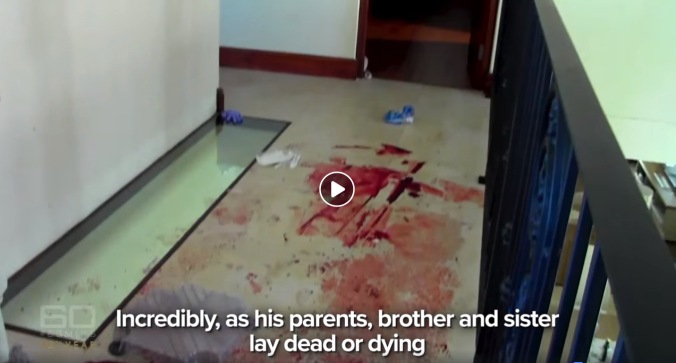

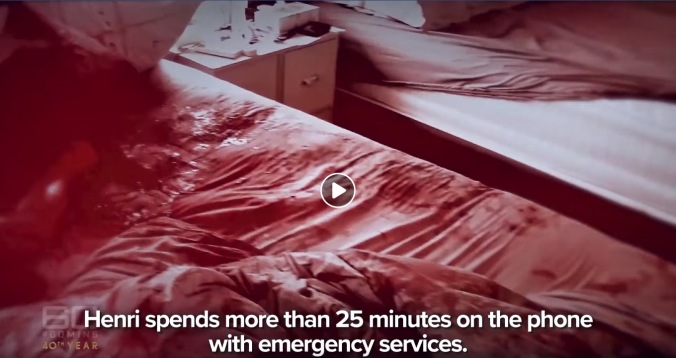
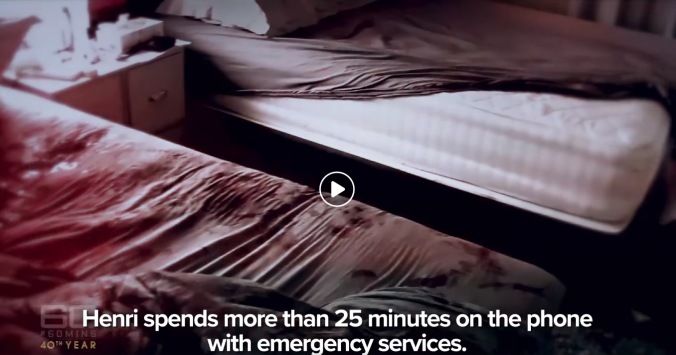


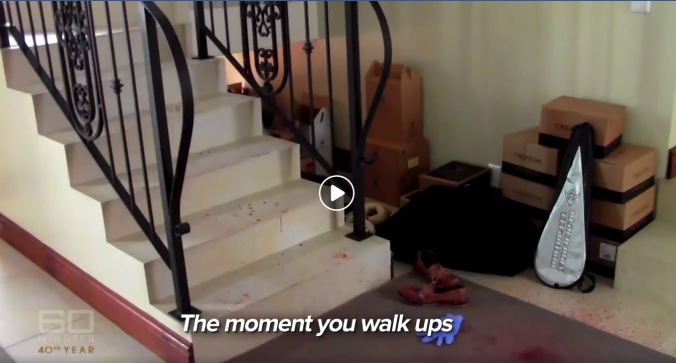


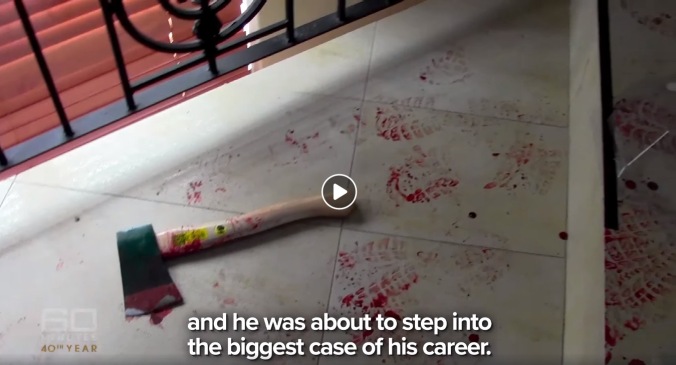

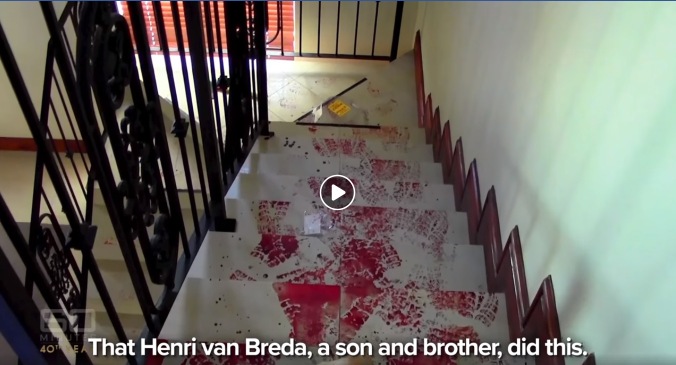

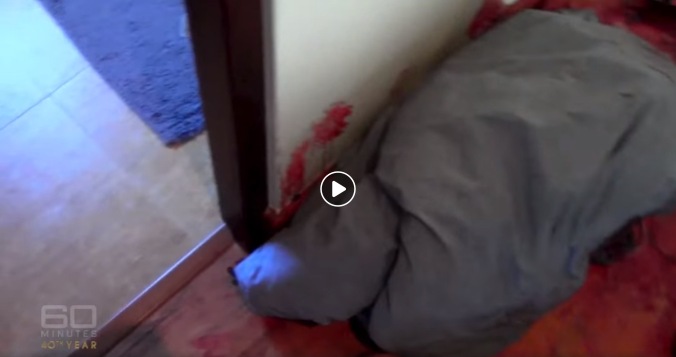









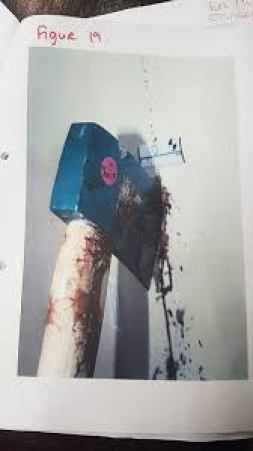














 12. Where did cadaver dogs pick up traces of Caylee’s remains [besides the Sunfire]?
12. Where did cadaver dogs pick up traces of Caylee’s remains [besides the Sunfire]?


